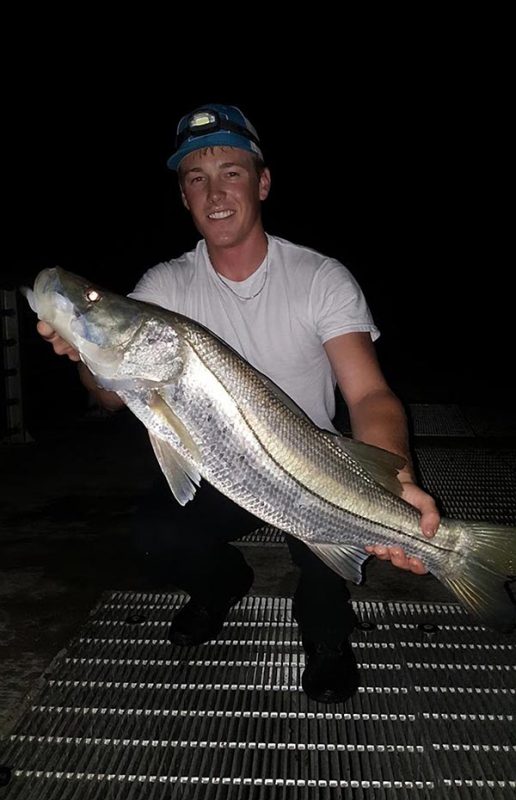
September has always signified the beginning of the inshore fishing season to me. May through August can no doubt still be fishy months in Sebastian, but the variety of options and the windows of opportunity to pursue them are much more specific than the rest of the year. The cooling water temps, brought about by shorter day lengths, tropical rains and the associated cloud cover, expand the bite windows of most inshore species in the late summer. The arrival of hordes of yearling silver mullet and the gamefish that shadow them is a welcome change to the summer status quo for both fish and fishermen in Sebastian. Snook are again in season as of September 1st and can be caught from the beaches to the backwaters. Atlantic zone rules apply, with one snook overall length between 28- and 32-inches allowed per angler per day. While snook rightfully garner the limelight in September, they are not the only gamefish available to Sebastian Area anglers, so I’ll break down each venue available in the Sebastian area and discuss what to expect in the late summer/early fall season.
Sebastian River
The tarpon and snook action in the Sebastian River will pick up by leaps and bounds as the schools of finger mullet make their way into the estuary. Live finger mullet, D.O.A. shrimp, C.A.L. jerk baits, as well as suspending and topwater MirrOlures, are excellent ways to target tarpon and snook throughout the day and night. Pay attention to the major and minor solunar periods when fishing the Sebastian River.
Indian River Lagoon
There are a few factors that will control when, and to what extent the fishing and more importantly the catching will pick up within the confines of the lagoon. These factors, in my opinion and in order of importance are the mullet run, water level and water temperature. The arrival of the migrating masses of three- to five-inch mullet is critical to the fishing in the Indian River Lagoon in September. Flats that seemed to be barren of life, suddenly produce all day topwater action when the mullet show up. This action is more likely to occur if water levels are up, water temps are down and the mullet, gamefish and fishermen have access to the shallowest backwater grass and mud flats. All types of artificials and live finger mullet fished wherever pods of mullet are found will draw strikes from anything with a mouth. Snook will ambush bait around shoreline structure including dock and mangroves, while trout and reds stalk the flats and spoil islands for a finger mullet meal. Topwater and suspending plugs, such as Super Spook Jr.’s and Catch 2000 Jr.’s. are very productive this time of year. D.O.A. jerk baits and shads will get you through just about any late summer situation in the central lagoon.
Sebastian Inlet
Sebastian Inlet will be will be the destination of anglers from near and far come September 1 with the opening of the snook season. The snook will be stacked up in the inlet and some years the oversize reds outnumber the snook in September. Live croakers, pigfish, shrimp and finger mullet will all get the attention of predators at the inlet. The tips of the jetties, the channel east of A1A and the north and south shorelines west of A1A will hold snook. Daytime snook fishing has historically required live bait for consistent success, but with snook numbers up, more and more local anglers are reporting daytime success with D.O.A. Shrimp and jerk baits. After dark, live bait is still preferred by anglers drifting the channel under the A1A Bridge, but trolling diving plugs has become a no hassle way to put a snook in the box lately. Shore bound anglers predominantly throw one- to two-ounce bucktails, and various diving plugs after dark.
Nearshore Atlantic
When weather conditions are favorable, the waters within two miles of the beach between Melbourne and Fort Pierce can be explosive in September. Snook, tarpon, reds, blues, Spanish mackerel, cobia, tripletail, sharks, jacks, and flounder all follow the migrating mullet southward. Fish live mullet, plugs, spoon, and shad tailed jigs, to name a few, from the beach or a boat to take advantage of some of the best fishing of the year.
FORECAST BY: Capt. Gus Brugger
Pattern Setter Charters
(772) 360-6787
www.WelcomeToSebastian.com




